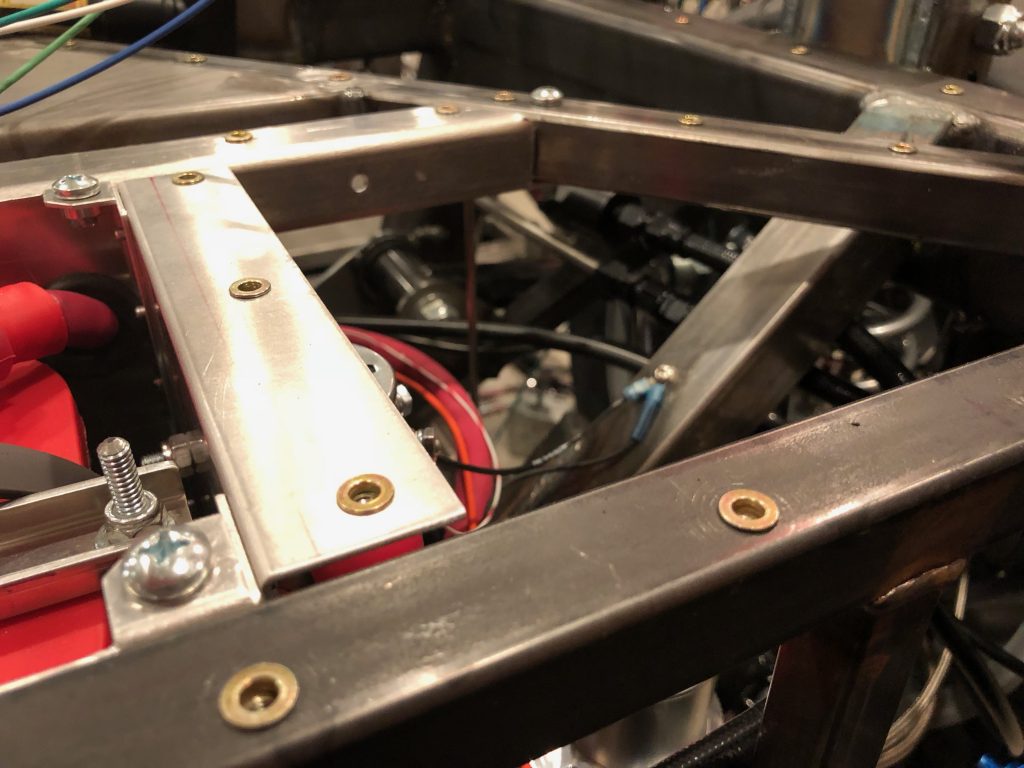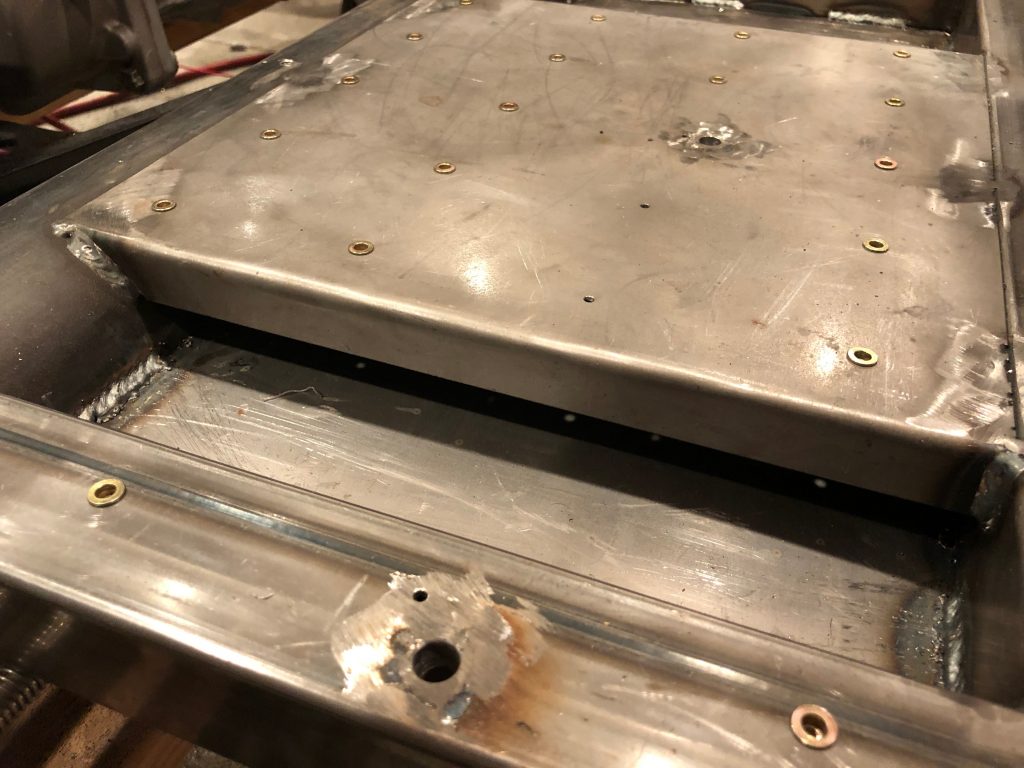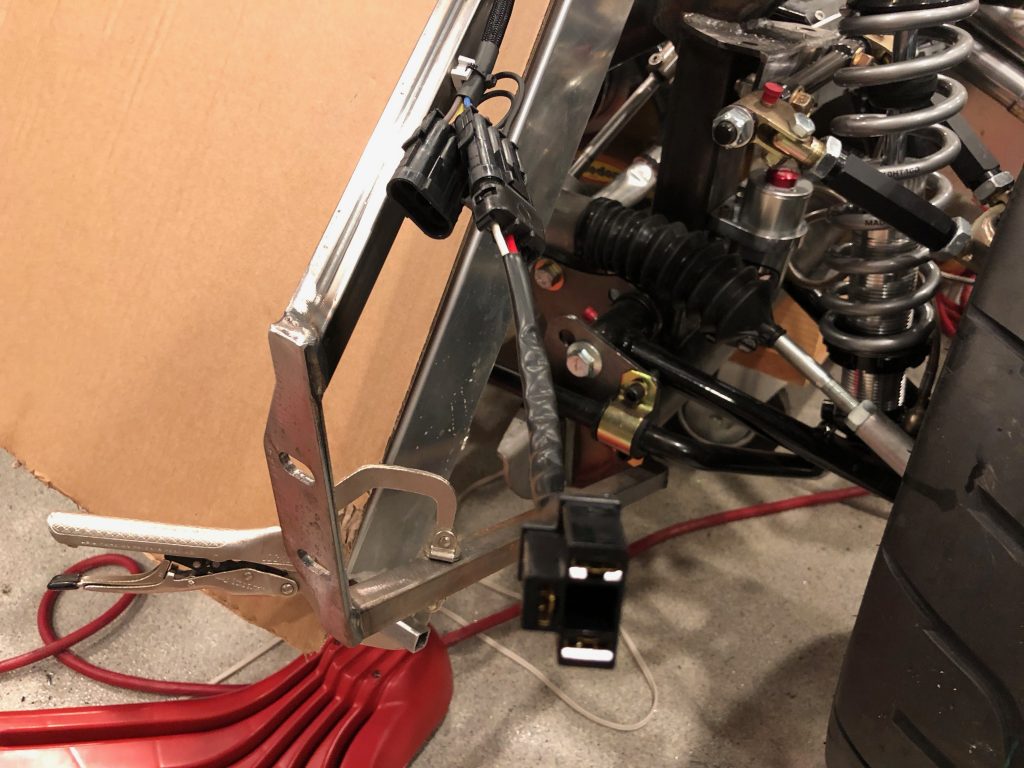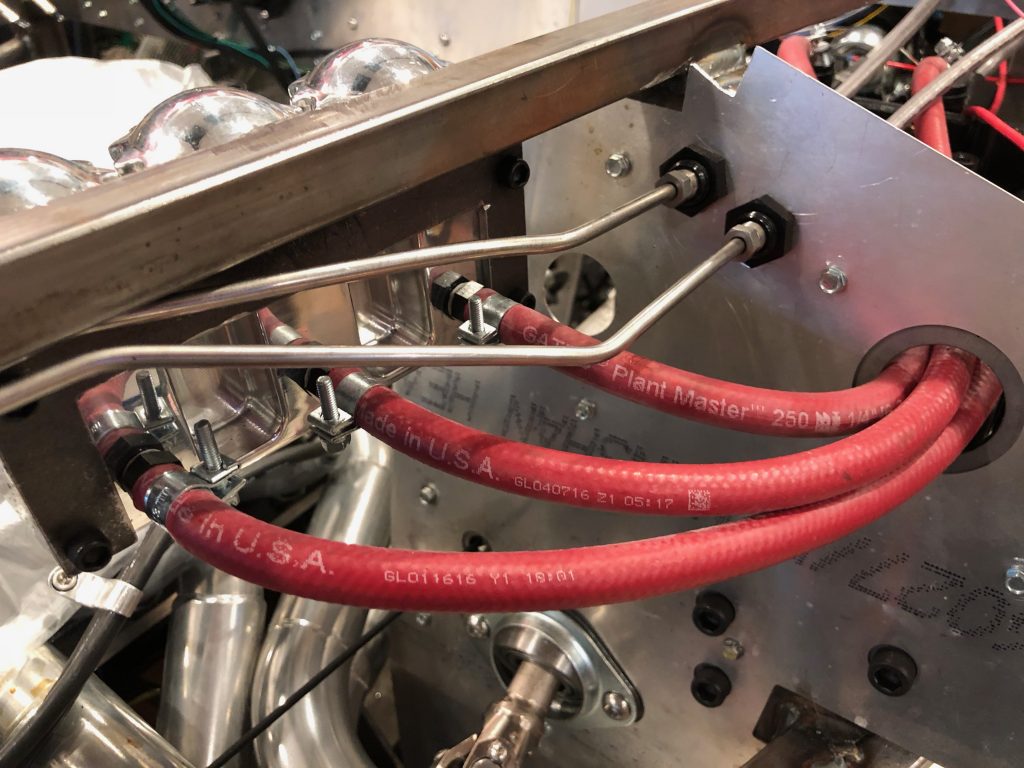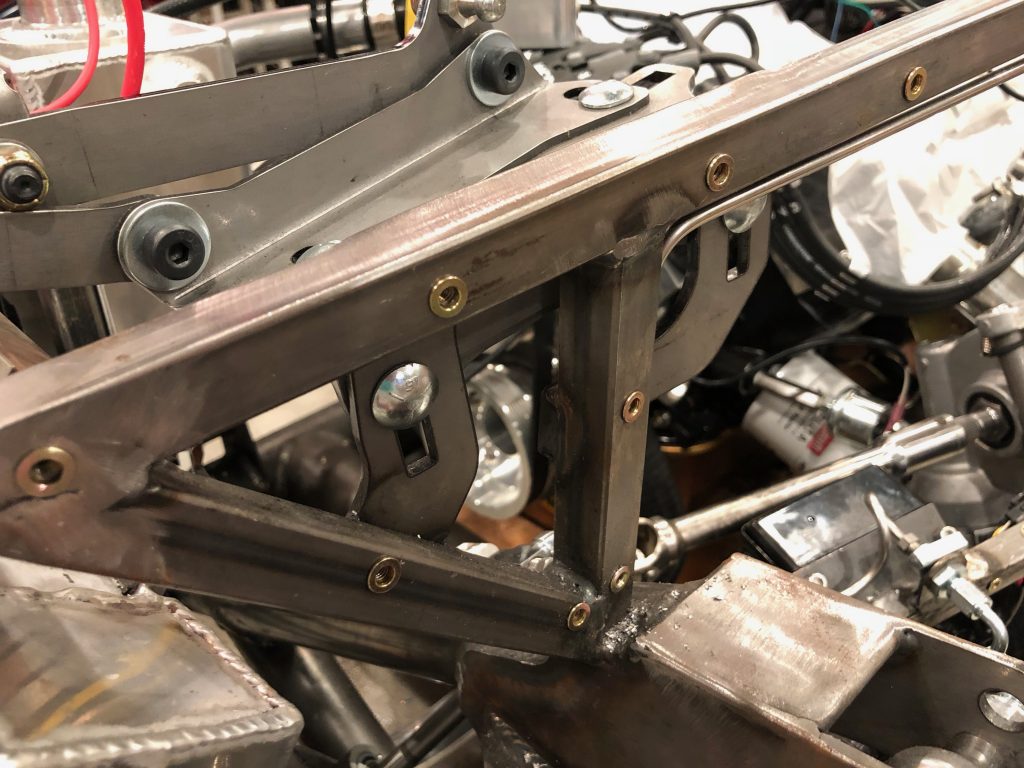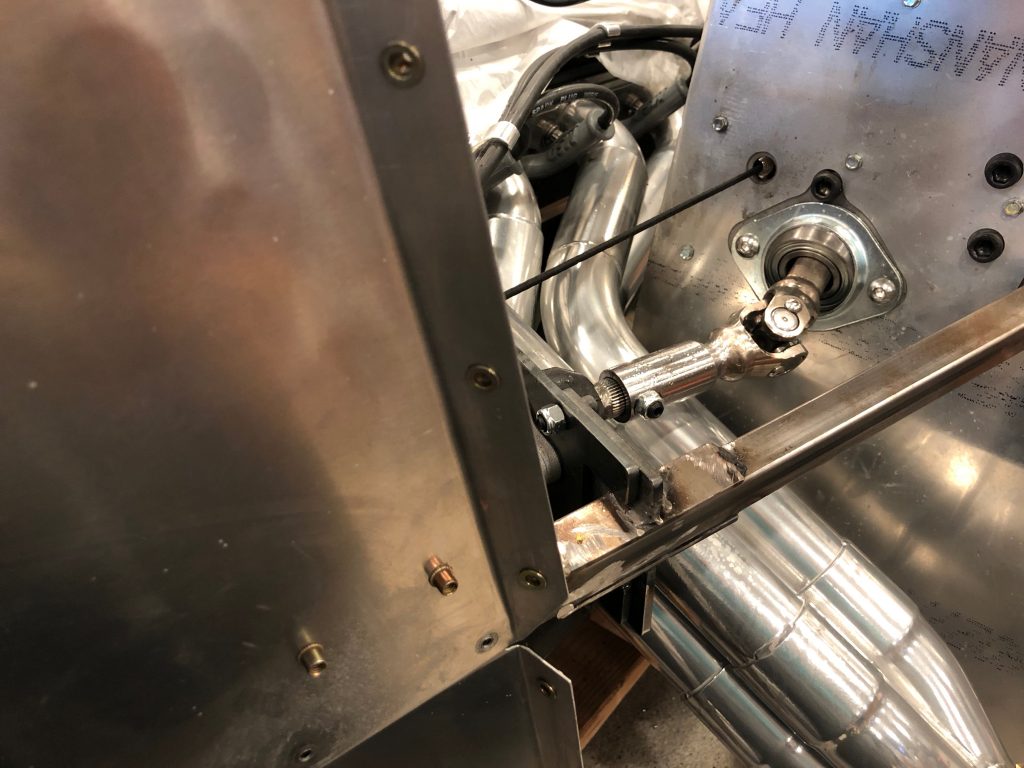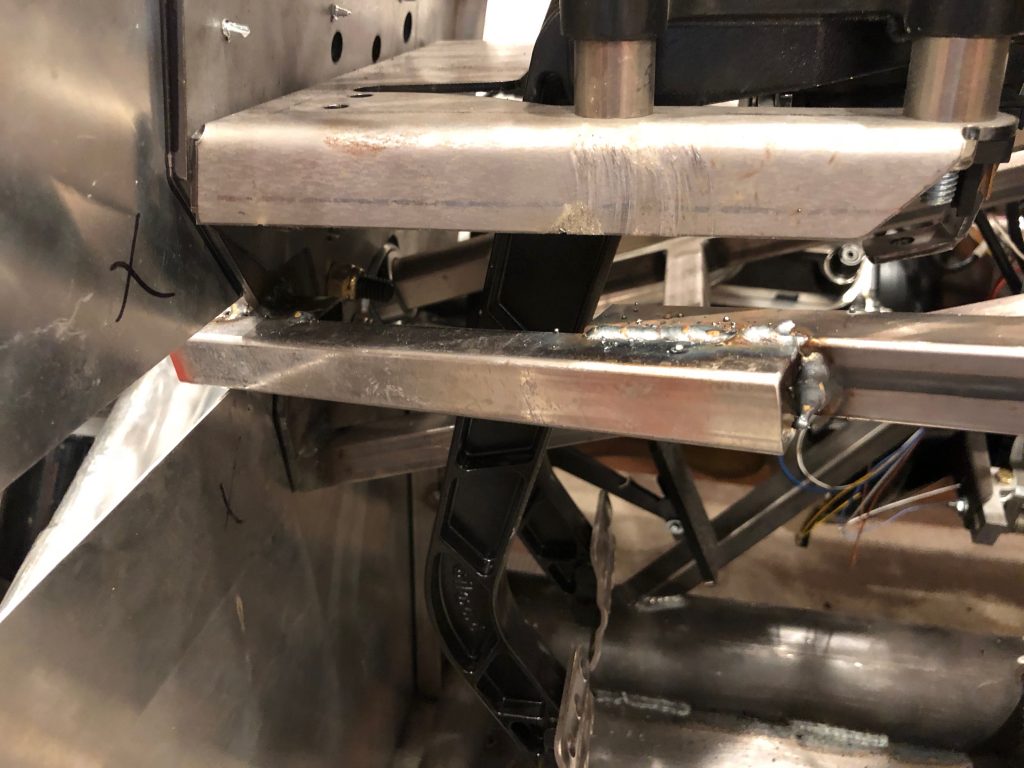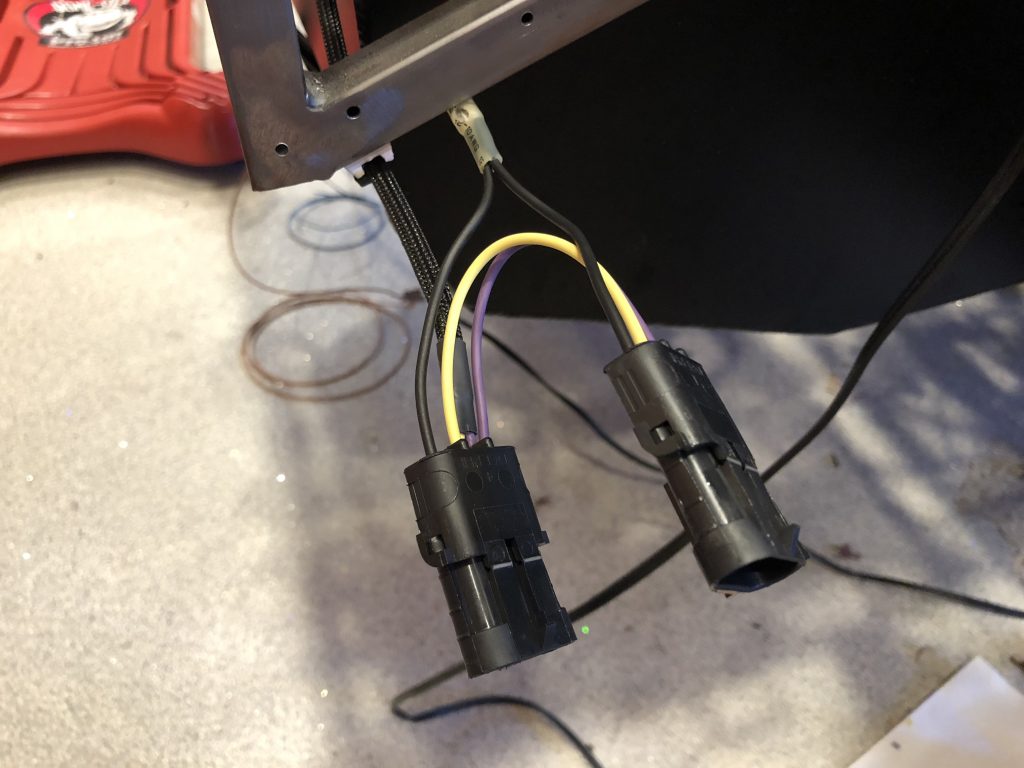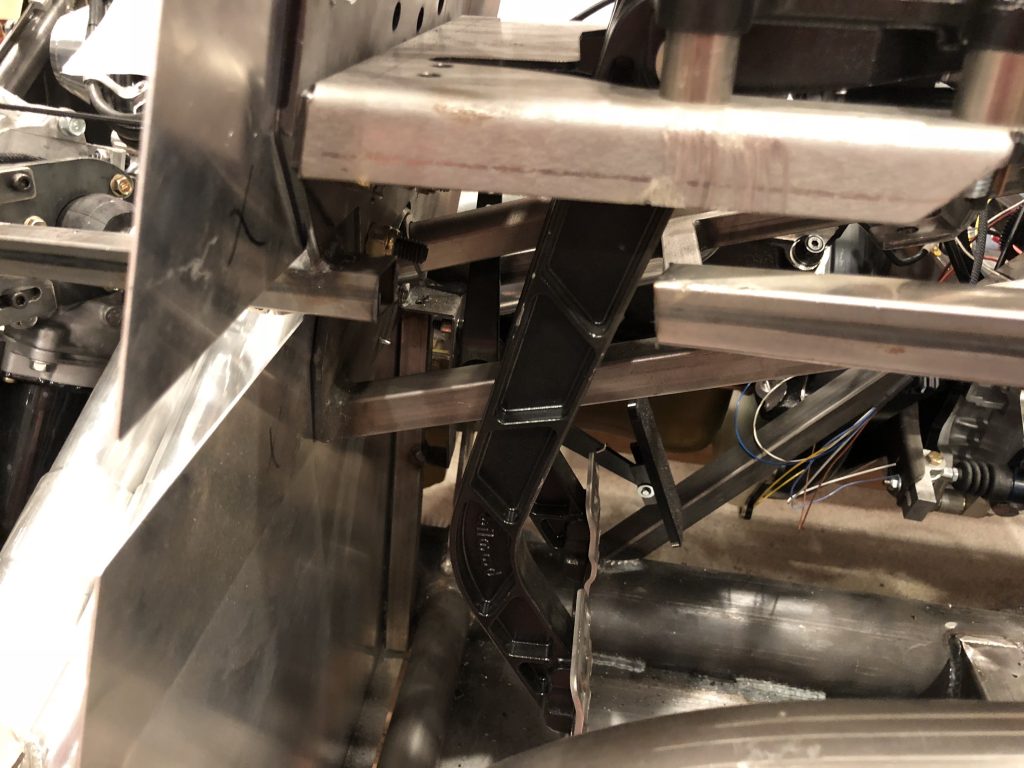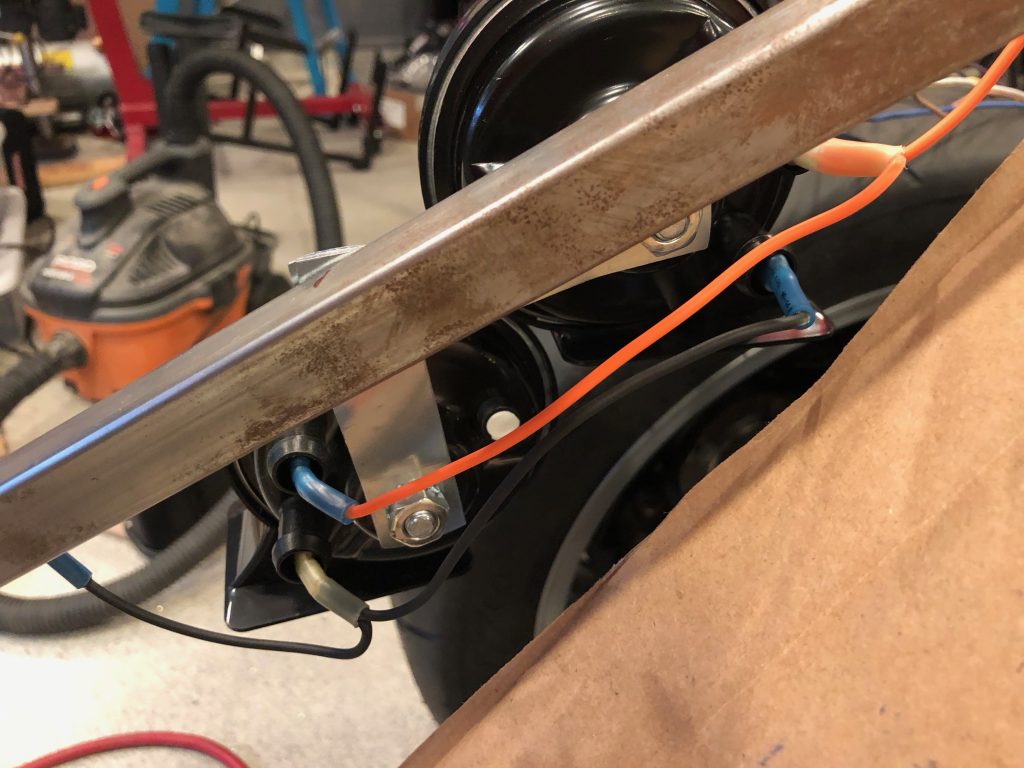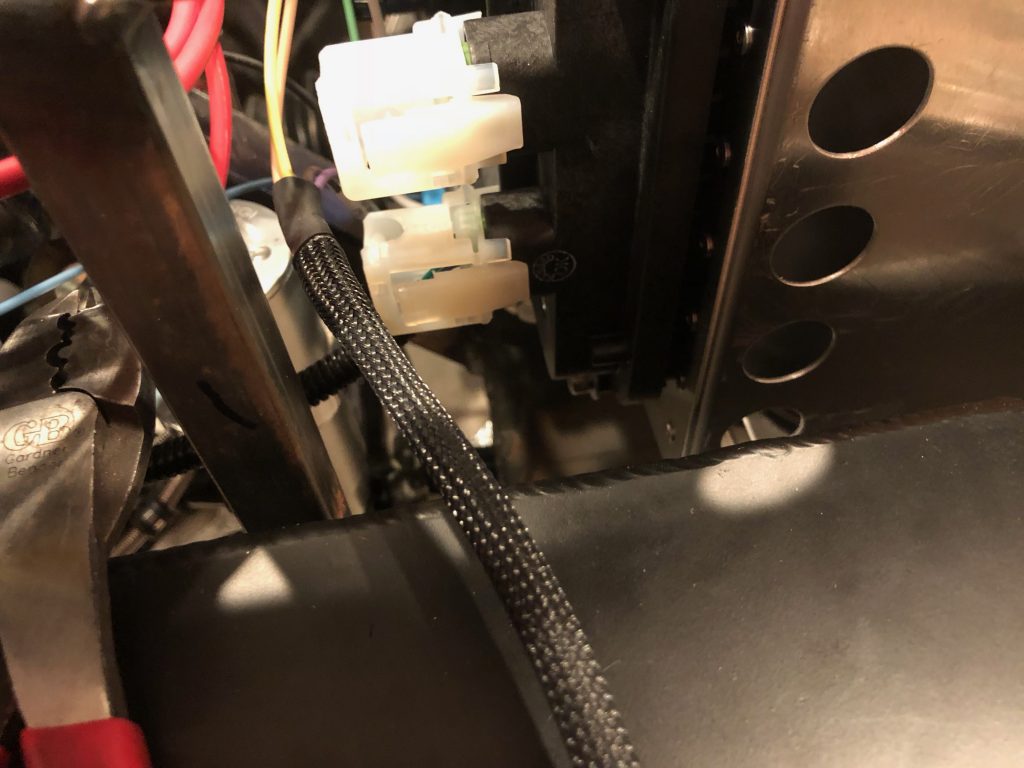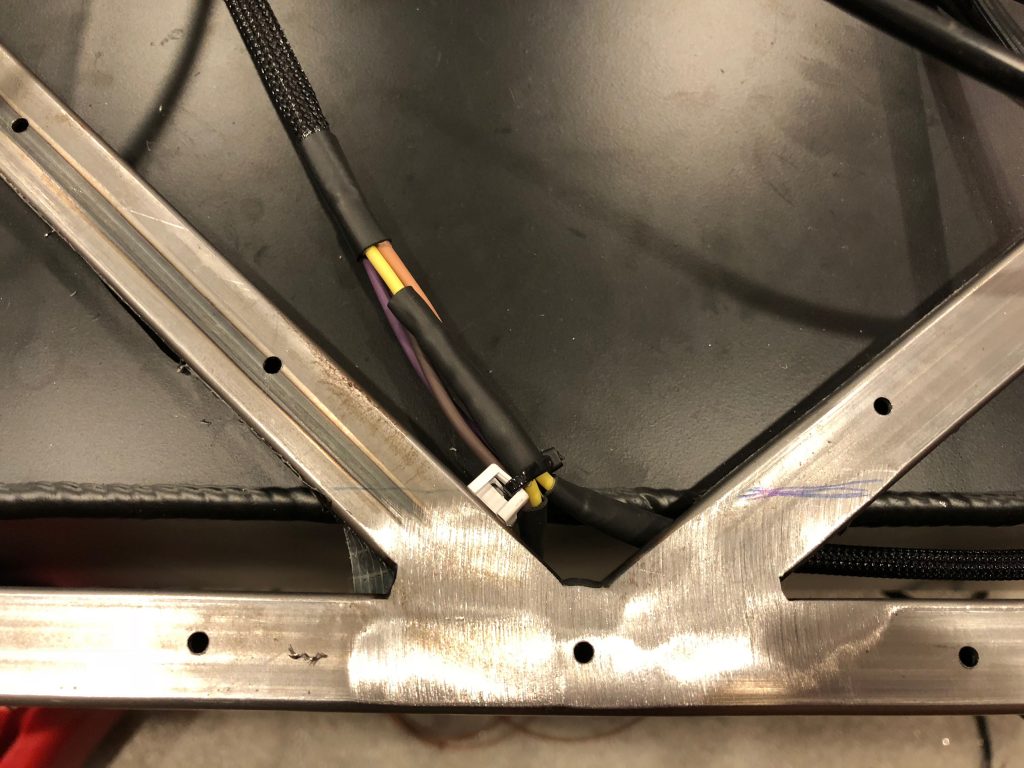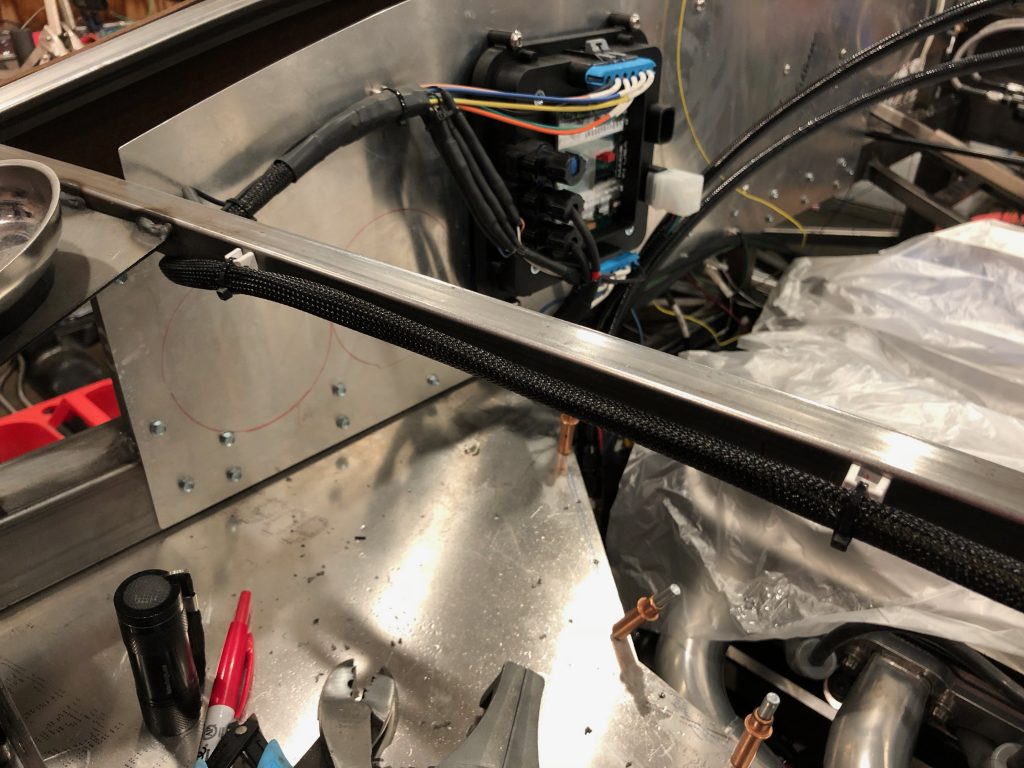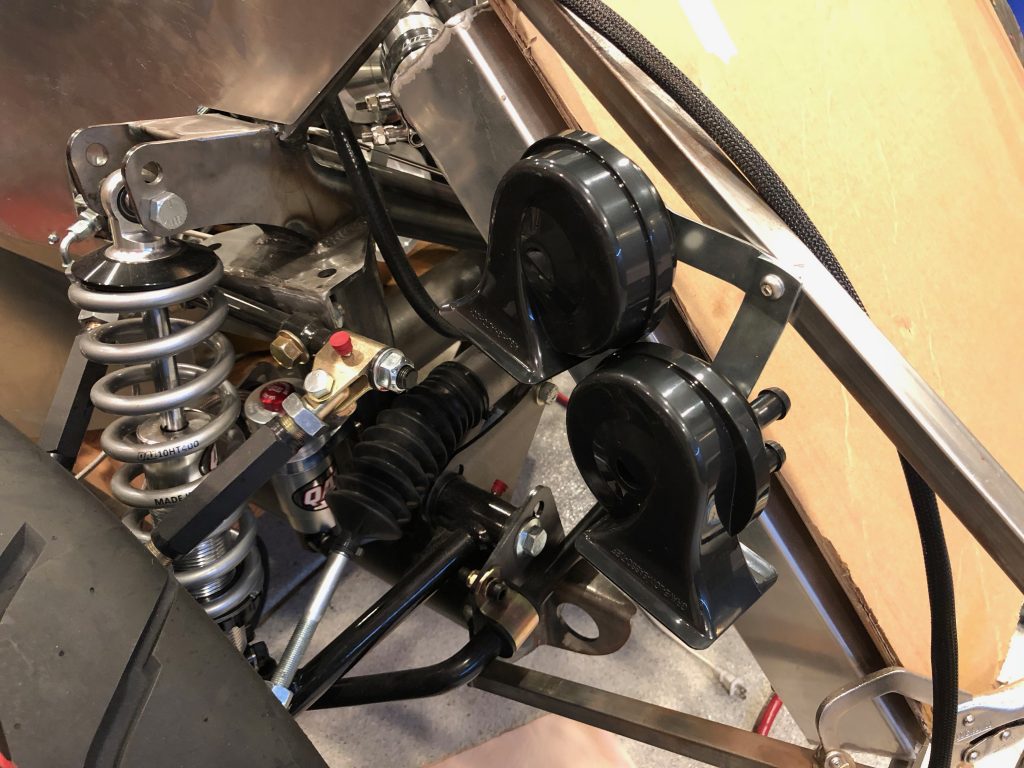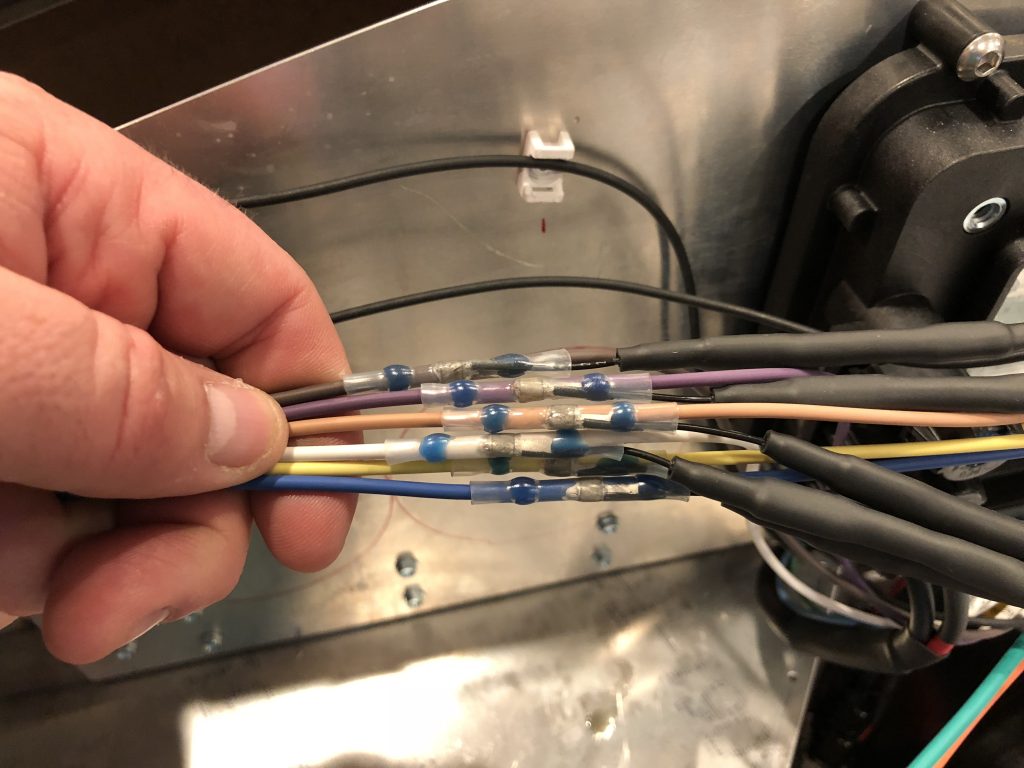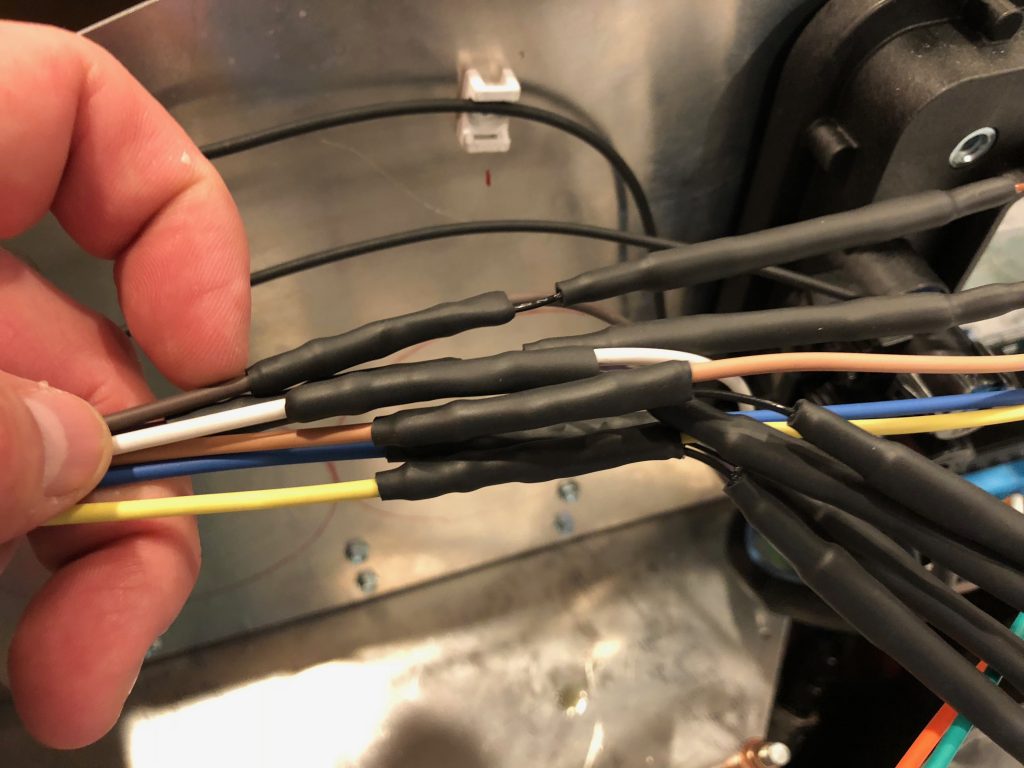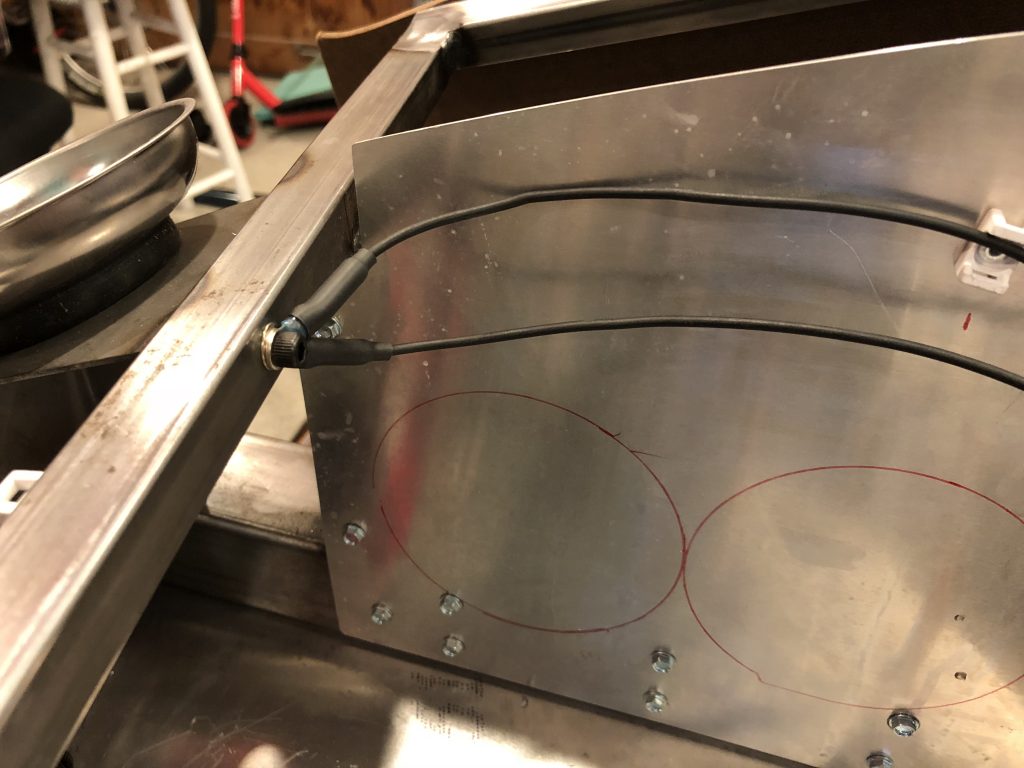I knocked out a bunch more of the chassis rivnuts that will secure the aluminum panels. Unfortunately, the 8-32 mandrel broke after a couple hundred, so I had to stop. Astro Pneumatic has a 1 year warranty and claims they will replace any component that fails under normal use, so we’ll see if they cover this. In the mean time, I have plenty of other things to work on.
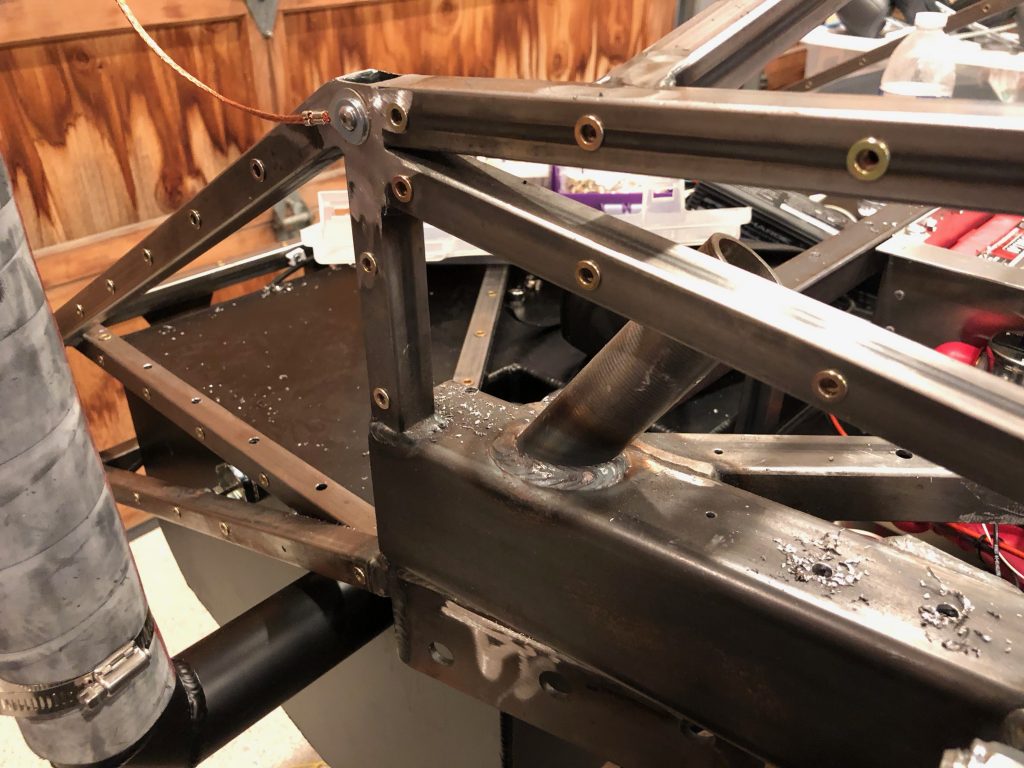
Three of the wires in the front chassis wiring harness (parking lights, low beams and high beams) need to be split and run to both the front left corner and front right corner. I stripped the insulation and used a few solder sleeves to splice into the wires. The bundle for the front left corner (which also includes the left turn signal) cuts under the chassis tubing and runs across the top edge of the radiator, secured by some adel clamps.
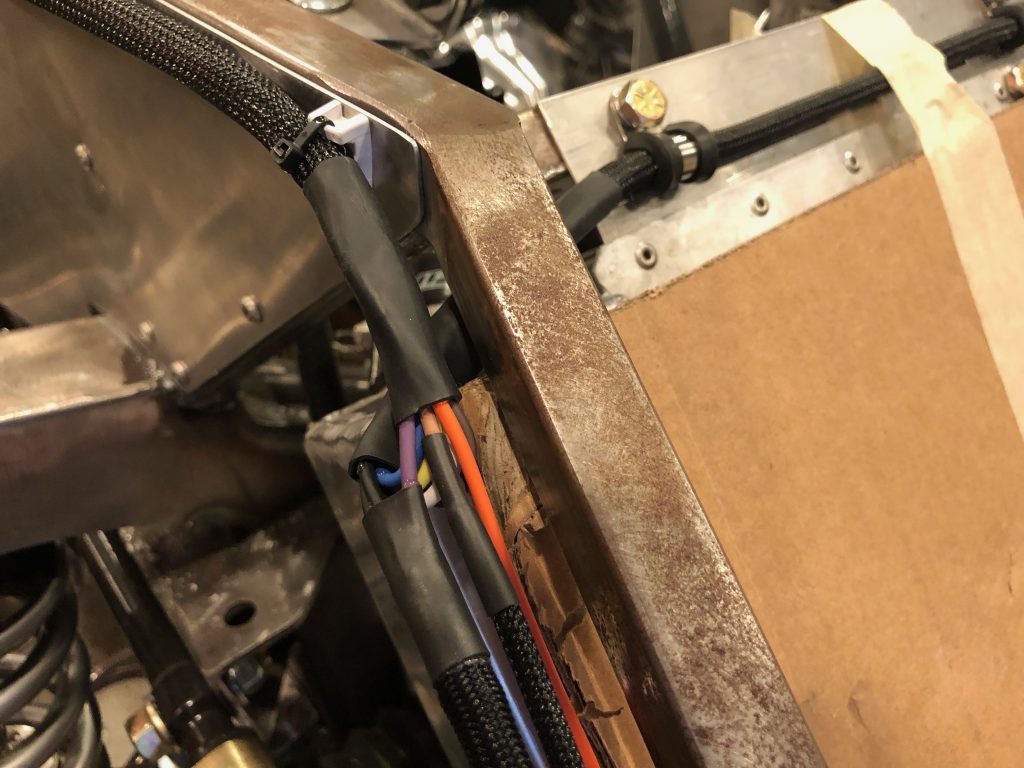
I ran out of three-conductor Weather Pack connectors, so I just terminated these with the appropriate plugs and seals. There will be two connectors here: one connector for the headlights with a ground wire, low and high beam wires, and another connector for the indicator light with a ground wire, parking light, and right turn signal.
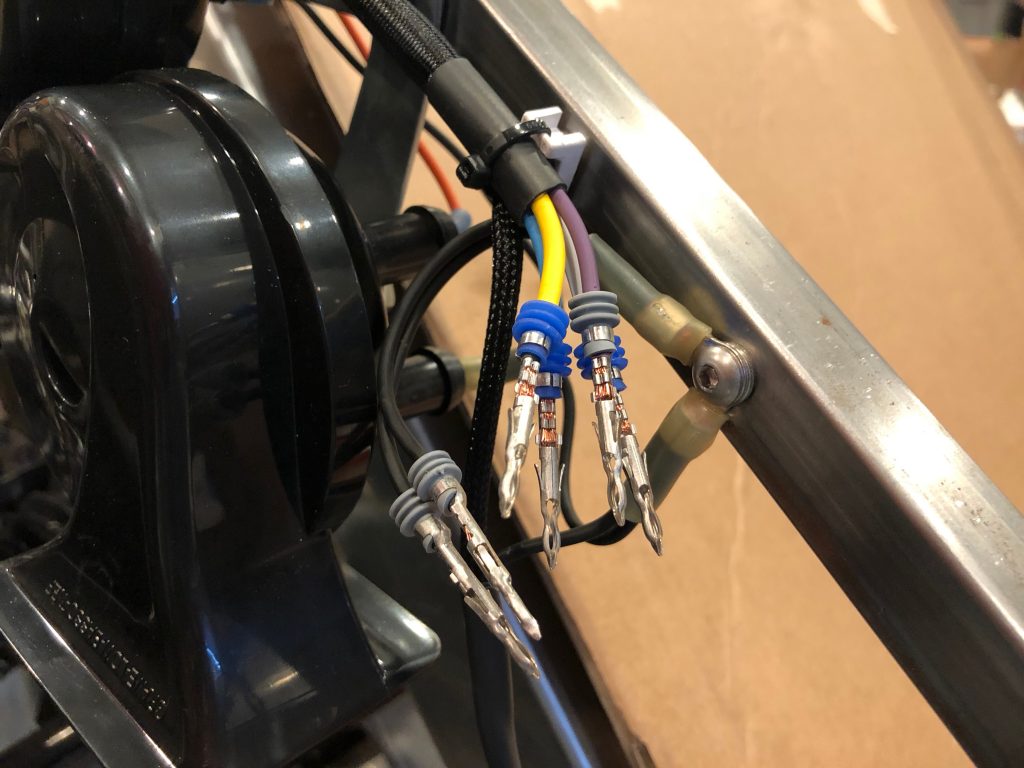
Another pair of wires drop down to the lower chassis tubing for the fan wiring. There will be a rivnut and zip-tie mounting block installed here, but it’s just zip-tied for now.

From there, it runs across to the fan. There will be a couple more attachment points across the lower edge of the fan shroud to secure this cable.
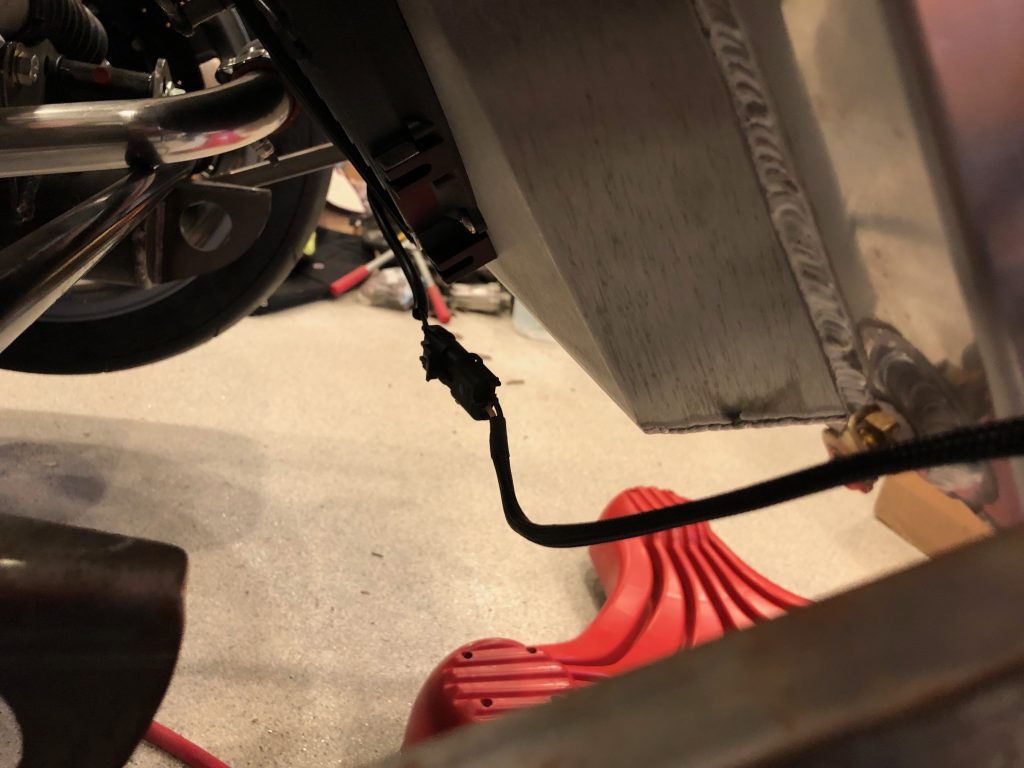
The cable that cuts across the top of the radiator runs down the left chassis member and terminates in a similar set of six wires. The two ground wires are secured to the chassis with a screw behind the bundle of four terminals to the left.


